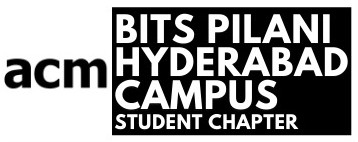History
Quantitative finance brings together mathematics, statistics, and programming to understand financial markets and make informed investment decisions. Its rise began in the 1970s with the introduction of models like Black-Scholes, which offered a new way to price options using probability and calculus. As technology advanced, so did the tools. What began as theory evolved into practice, with firms using data-driven methods to build strategies, manage portfolios, and automate trades. Today, quant methods form the backbone of many hedge funds, investment banks, and trading systems.
Getting into it
Beginners often begin their journey through market simulations. Platforms like TradingView and Sensibull provide access to live data in a risk-free environment, allowing users to place mock trades and observe how markets behave in real time. This practical exposure builds familiarity with order types, price action, and the mechanics of trading.
Once basic concepts are in place, simple strategies offer a natural progression. Approaches such as moving average crossovers or momentum signals introduce structured decision-making and help highlight the role of timing and discipline. Leveraging Python libraries such as NumPy, Pandas, Matplotlib, and Scikit-Learn with historical data allows for rigorous testing and refinement of these ideas, providing early insights through metrics like drawdown, win rate, and Sharpe ratio.
Foundational reading adds depth to this process. Books such as Quantitative Trading by Ernest Chan and The Man Who Solved the Market by Gregory Zuckerman provide both technical context and real-world perspective. Exploring introductory options strategies, like covered calls, can further broaden one's understanding of market structure and risk.
In parallel, solving small logic or probability puzzles helps sharpen analytical thinking, which remains a key part of both learning and interview preparation.
Projects
For those familiar with the basics of quantitative finance, small projects are a practical way to apply concepts and gain experience. A good starting point is to build a simple backtesting engine in Python. This can be used to test strategies such as moving average crossovers, RSI thresholds, or breakout conditions. Add performance metrics like maximum drawdown, Sharpe ratio, and win rate to assess results more clearly.
Another useful project is creating a basic portfolio tracker. This could include daily return calculations, visualisation of cumulative returns, and risk metrics such as volatility or correlation between assets. Pulling real-time data from sources like Yahoo Finance or Alpha Vantage can add practical value.
Exploring pair trading is another option. Identify two historically correlated stocks, monitor their price spread, and set conditions for entering and exiting trades. This introduces the idea of mean reversion and statistical arbitrage.
Short research briefs can also be valuable. These might include analysing how momentum behaves in different sectors, comparing volatility before and after major events, or testing if a certain technical indicator works better on specific asset classes. Each brief should focus on one question, explain the approach, and summarise key findings.
Finally, working in small teams on short-term sprints builds habits that matter in real environments. Tasks like cleaning large datasets, tuning strategy parameters, or writing modular code simulate the collaborative structure of actual quant teams.
With the right mix of theory, tools, and hands-on practice, quantitative finance becomes less abstract and more approachable. Whether through simulations, models, research, or collaborative projects, each activity builds a clearer understanding of how data and decisions interact in financial systems. Starting small and staying consistent can lead to skills that remain useful across roles in analytics, research, and financial technology.
